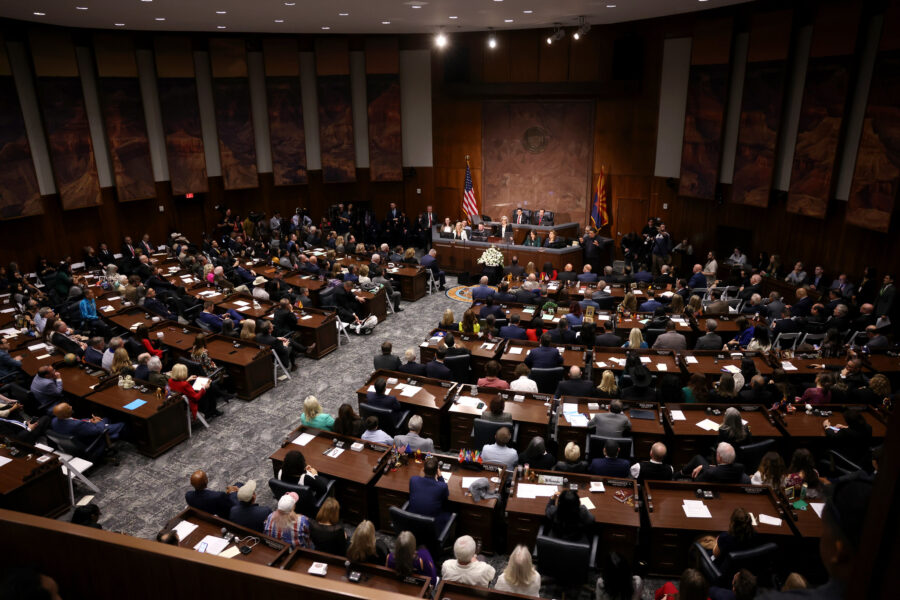Copyright The Boston Globe

The dismantling of the Department of Education has left Massachusetts colleges that rely on the federal government for assistance — including routine approvals for new programs and financial aid — scrambling. Since March, the Trump administration has terminated over half of its staff, though the layoffs are being challenged in court. The Boston division — which consisted of around 30 employees who handled compliance and civil rights complaints at colleges in New England, New York, New Jersey, and Puerto Rico — no longer exists. Former employees say its offices in the McCormack Building sit mostly deserted. Education Secretary Linda McMahon, in a social media post in October, said schools “are operating as normal” after the agency layoffs and during the ongoing government shutdown. “It confirms what the President has said,” she wrote. “The federal Department of Education is unnecessary, and we should return education to the states.” However, interviews with former department employees and college administrators reveal a different story about how the consequences are beginning to take hold. At UMass Boston, nine student support employees were laid off when the Trump administration pulled back some funding for outreach programs for disadvantaged students. The Department of Education did approve UMass Boston’s appeal to keep a $530,000 grant to fund other student support services through next August, but the agency denied a grant application for the following five years, $2.6 million in all. The school is now waiting for another appeal that could be slow to come. And statewide, Massachusetts colleges received at least $36 million last year in Department of Education grants for low-income and minority students. But much of it is under threat or gone due to the recent cuts, including money for community colleges with enough Latino students to qualify for the now-eliminated Hispanic Serving Institution designation. At the same time, thousands of complaints about student loan servicers are going unanswered by the department, a sign that the government is “abandoning Americans who have been scammed” while borrowing money, Massachusetts Senator Elizabeth Warren said in August. And the Department of Education committee responsible for convening college accrediting agencies, including the primary oversight body for New England colleges, has pushed its semiannual meeting twice. Accreditors’ compliance reports will not be reviewed until December, six months after the original timeline. That could put the New England accreditor — a nonprofit that oversees 200-some colleges — at risk of losing its own authorization from the federal government, experts said, raising the possibility of cascading impacts on universities. The department division that flags financial trouble at universities — a status called “heightened cash monitoring” — has also been largely dismantled, two former department employees told the Globe. Its list of monitored schools has not been updated since June, making it tougher for students and regulators to tell which institutions are in distress. Now problems are mounting at colleges looking to launch new programs, recertify existing ones, declare financial insolvency, or close or merge with other institutions — actions that often require federal sign-off. Something as simple as allowing a college to offer certificate programs, in addition to bachelor’s and master’s degrees, can be complicated now. “[It] used to be a quick process and may not be anymore,” said Melissa Weinberger, a spokesperson for Bay Path University outside of Springfield. One longtime department staffer in Boston, who declined to share his name due to fear of retribution, said layoffs happened so quickly that he accepted his early retirement offer and stopped working within a week. Before logging off, he moved his half-done reviews of schools found to be defrauding students into a shared Google Drive folder, likely never to be revisited. The evidence of misbehavior, enough to warrant millions of dollars in clawbacks, is potentially lost in the online void, he said. The Department of Education did not address a list of questions about the agency’s functions from the Globe. But spokesperson Madison Biedermann blamed the ongoing government shutdown for the delays. Critics said many of the impacts predate the monthlong standoff. “When you haphazardly cut whole teams, and people from other teams quit or are forced to retire, there [are] going to be problems with everything,” said Bradley Custer, a former Washington, D.C., employee in the federal student aid office. “The institutions are going to be feeling the effects of those people gone.” State officials are feeling it, too. The Massachusetts Department of Higher Education relies on data about safety incidents and assaults at colleges that the federal agency compiles, but its statistical branch, the National Center for Education Statistics, has been gutted. And the state’s financial aid programs for public college students are dependent on timely approval of federal funding from the agency. Today, most former federal employees cannot pinpoint who took over their responsibilities. Trump officials consolidated the compliance and institutional review divisions based in 10 regional offices to a small staff in Chicago and Philadelphia. Few, if any, civil rights lawyers are still on payroll, and the federal student aid office has been halved from 1,400 employees to 700, according to figures compiled by its union. There are rumblings that the White House is considering selling part of the federal government’s $1.6 trillion student loan portfolio to private investors. “The data collection, compliance, [and] ministerial work … have already been impacted,” said Vincent Pedone, executive director of the Massachusetts State Universities Council of Presidents. “But what’s keeping me up at night are the cuts — and now the shutdown — may create issues for the campuses as they try to draw down federal financial aid, grants, and process student loan applications.” Already, the department’s internal portal for financial aid disbursement is riddled with glitches and failures without staff to maintain it, said Karyn Wright-Moore, a consultant with the Higher Education Assistance Group in Wellesley. And the agency, she added, has been slow to onboard any new financial aid staff at Massachusetts colleges. “When you fill a necessary position, the staff needs access to [Department of Education] systems,” Wright-Moore said. “That has gone from being granted in 72 hours to up to 2 weeks.” In the meantime, college administrators said, barely anyone is around to answer phone calls at the agency that oversees them. This year, the federal government increased admissions reporting requirements, overhauled the student loan system, and created pathways for new workforce training programs at colleges. Those moves upped the workload for university staff, who are already dwindling in number as budget cuts mount. Yet by July, before the latest round of layoffs, 72 percent of administrators surveyed by the National Association of Student Loan Administrators reported noticeable delays reaching the department. Many said they do not know who to contact for a routine issue. At Connecticut State Community College, Steven McDowell and his financial aid staff have faced “delays in responsiveness” as they tweak the school’s Title IV application, a requirement for federal student aid. It comes amid months of heightened confusion and concern, when students have bombarded the office with questions about whether they still qualify for loans under the new rules. “Those response times have been weeks, if not months, and that could include simple updates,” McDowell said. “When you don’t get those responses from the department, you lack the ability to ensure students can access it in a timely manner.” And this semester may only be a glimpse into how bad the situation could become, said Jay Dee, a higher education professor at the University of Massachusetts Boston. Hundreds of colleges will shutter over the next decade. The financial aid landscape — who receives it, when it comes, and how it is repaid — is changing. And the department is dealing with three times as many civil rights complaints today than in 2020, leaving an “unprecedented and unmanageable number” of cases on each investigator’s desk, according to a letter Senate Democrats sent to the Trump administration this month. “My concern is that we haven’t seen the biggest impact yet. Some of those staff were still there preparing for this academic year, and now they are gone,” Dee said. “I’m more worried about the next academic year.” Anjali Huynh of the Globe staff contributed to this story.



